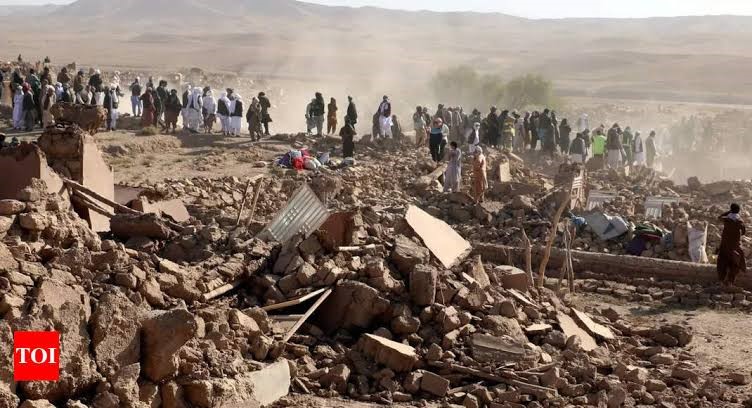
Earthquake in afghanistan

11.10.2023
Earthquake in afghanistan , Daily Current Affairs , RACE IAS : Best IAS Coaching in Lucknow
|
For Prelims:Earthquake,Major causes of earthquake For mains Gs paper 1:Types of earthquake,earthquake in India |
Why in the news?
The death toll from the recent 6.3 magnitude earthquake that struck Afghanistan's western city of Herat, about 40 km away, has risen to 2,000.
important point
- In Afghanistan, the death toll from a powerful earthquake has reached more than 2,400.
- In June 2022, a powerful earthquake also struck a rugged mountainous region of eastern Afghanistan.
- The earthquake was the deadliest in Afghanistan in two decades, killing at least 1,000 people.
- The most dangerous earthquake ever in terms of intensity occurred in Chile on May 22, 1960. Whose intensity was said to be 9.5 on the Richter scale.
About Earthquake:
- Earthquake means vibration of the earth. This is a natural phenomenon, in which due to the release of energy from inside the earth, waves are generated which spread in all directions and cause the earth to vibrate.
- It is caused by seismic waves or earthquake waves that cause a sudden movement (sudden release of energy) in the Earth's crust (shallow-focus earthquakes) or upper mantle (some shallow-focus and all intermediate and deep-focus earthquakes).
- The scientific study of earthquakes and seismic waves is called seismology.
- Which passes through all four sides of the Earth. Seismic waves are elastic waves that propagate in solid or fluid materials.
- A seismograph, or seismometer, is an instrument used to detect and record earthquakes.
- The place below the earth's surface where the epicenter of an earthquake is located is called the hypocenter and the place above the earth's surface where the seismic waves reach first is called the epicenter.
- Isoseismal line: A line connecting all points on the surface where intensity is the same.
- When there is vibration on the ground due to an earthquake, it is called shock.
- The line joining places with equal earthquake intensity is called isoquake line and the line joining waves arriving at the same time is called coseismic line.
Major causes of earthquake:
- volcanic eruptions
- human-induced earthquake
- shrinking of the earth
- thrust and fault
- elastic rebound theory
Types of earthquake:
tectonic earthquake
- The most common are tectonic earthquakes.
- The Earth is made up of four basic layers (usually three): a solid crust, a hot, nearly solid mantle, a liquid outer core, and a solid inner core.
- Tectonic plates (lithospheric plates) are constantly moving as they flow beneath the viscous, or slowly flowing, mantle layer.
- When the tectonic plates move, it also causes movement on the (Anatolian Plate).
- Thus, sliding of land along fault lines along convergent, divergent and transform boundaries causes earthquakes.
volcanic earthquake
- Earthquakes caused by stress changes in solid rock due to injection or expulsion of magma (molten rock) are called volcanic earthquakes.
human induced earthquake
- In areas with intense mining activity, roofs of underground mines sometimes collapse causing minor tremors. These are called collapse earthquakes.
- The ground can also shake due to the explosion of chemical or nuclear devices. Such tremors are called blast earthquakes.
About earthquake in India:
- India is one of the earthquake prone countries due to the presence of the tectonically active folded Himalayan Mountains.
- On the basis of past earthquakes and tectonic tremors, India has been divided into four seismic zones (II, III, IV and V).
- Seismic Zone V is the most vulnerable area to earthquakes, Earthquake Zone II is the least.
- Earlier earthquake zones were divided into five zones with respect to the severity of earthquakes, but the Bureau of Indian Standards has merged the first two zones together and divided the country into four seismic zones.
Source:Indian Express